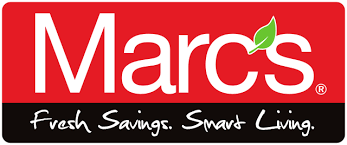GUADALAJARA, Mexico — The Aneberries international conference and expo held July 23-24, welcomed a record 3,000 attendees to its 15th annual event focused on the global berry market. Aneberries kicked off with a look at berry consumer shopping trends from The Packer's 2025 Fresh Trends report.
Based on a survey of more than 1,100 consumers across the U.S., Fresh Trends 2025 surveyed shoppers about their fresh fruit and vegetable purchasing habits in 50 commodities — including berries — over the prior 12 months. Fielded in February, Fresh Trends 2025 also surveyed five generations (Gen Z, millennials, Gen X, baby boomers and traditionalists) about what and why they buy in the produce department.

Berries by the Numbers
The total berry category continues to dominate. Dollar sales for the berry category were over $12.5 billion, according to Circana OmniMarket Integrated Fresh retail data for the 52-week period ending June 15, 2025, up 7.5% over a year ago. That's dollar sales more than twice what the next leading produce category — grapes — posted for that same time period.
When it comes to berry types most purchased, Fresh Trends 2025 finds that strawberries and blueberries lead the category with 54% of consumers reporting purchasing the berries in the last 12 months. Blackberries came in next at 34%, and raspberries were the least-purchased berry in the category at 30%.

Blackberries Resonate With Older Shoppers
Fresh Trends 2025 found that higher-earning consumers with an annual household income greater than $100,000 were the most frequent purchaser of blackberries at 46%.
Older consumers were also among the most frequent purchasers of conventional blackberries with 71% of those aged 50 to 59 and 73% of those aged 60 or older reporting they purchased them in the last 12 months.
A look at conventional compared to organic blackberry sales shows a decided consumer preference for conventional. Of those who purchased blackberries in the last 12 months, 52% said they prefer conventional blackberries compared with 20% of those who only purchased organic. Twenty-five percent of consumers reported buying both conventional and organic blackberries.
But a key takeaway from Fresh Trends 2025 was that younger consumers are buying more organic produce, and despite being most sensitive to food inflation, they are also more willing to pay more for organic. This is evident in the berry category as well with 36% of Gen Z and 24% of millennials reporting purchasing organic blackberries compared with just 15% of Gen X and 5% of baby boomers.

Something Blue, Something New
Fresh Trends 2025 found that 54% of consumers purchased blueberries in the last 12 months — the same percentage as last year's survey but higher than the 37% reporting so in Fresh Trends 2023.
As with blackberries, higher-income consumers were most likely to report a blueberry purchase, with 64% of shoppers earning more than $100,000 in annual household income indicating purchases. Older consumers were also more likely to purchase blueberries, with 60% of those aged 50 to 59 and 59% of those aged 60 or older putting blueberries in their shopping baskets.
Among blueberry consumers, the majority, or 52%, prefer to buy conventionally grown blueberries, compared to just 20% who purchased organic exclusively and 24% who said they purchased both conventional and organic.
Once again, younger consumers showed more love for organic, with 32% of Gen Z and 24% of millennials reporting organic blueberry purchases in the past 12 months. This is compared to just 9% of baby boomers, 13% of traditionalists and 16% of Gen Xers.
And the blueberry category is benefiting from differentiation, as brands have introduced extra-large blueberries in recent years. Nearly half of consumers, or 45%, reported having purchased jumbo blueberries in the past 12 months.
A look at purchase of jumbo blueberries by generation, reveals that younger consumers were more apt to purchase the fruit. At 54%, millennials were far and away the leading purchasers of extra-large blueberries.
Reported purchase of jumbo blueberries in past 12 months by generation:
- 43% of Gen Z
- 54% of millennials
- 44% of Gen Xers
- 34% of baby boomers
- 38% of traditionalists
The jumbo blueberry purchasing habits of men versus women reveals another interesting trend. Throughout the Fresh Trends 2025 survey, men and women were closely aligned in their buying behavior, with relatively few exceptions. But when it comes to blueberries, 50% of men reported having purchased extra-large blueberries in the last 12 months compared with 40% of women.
The Packer has spoken with suppliers of extra-large blueberries who've said they see their product resonating with men, who perhaps view jumbo blueberries as a more substantial or satisfying snack. Cracking into the snacking trend with bigger blueberries could be a game changer for the subcategory.

Raspberries Cross Generations
Thirty percent of consumers surveyed in Fresh Trends 2025 reported purchasing raspberries in the last 12 months. Generationally speaking, the consumers who most frequently reported purchasing raspberries in the past 12 months were baby boomers at 38%, Gen X at 32% and Gen Z at 30%.
When it comes to conventional versus organic raspberries, consumers purchased far more conventional raspberries than organic, with the majority, or 59%, of consumers saying they purchased conventional raspberries, compared with just 15% who said they only purchased organic raspberries.
On the organic front, the trend of the youngest berry shoppers gravitating to organics is apparent again with 38% of Gen Z indicating they had purchased organic raspberries in the last 12 months.

Strawberries Top the Most-Purchased List
Strawberries not only made Fresh Trends 2025's list of the top 10 most purchased fruits and vegetables — coming in at No. 8 with 54% of consumers saying they purchased strawberries in the last 12 months — but strawberries are also the No. 1 item in the berry category that consumers most frequently reported purchasing as organic. Twenty-three percent of all consumers surveyed said they bought organic strawberries in the last 12 months.
The big red berry also continues to gain new customers. Nine percent of consumers surveyed in Fresh Trends 2025 said they were new purchasers of strawberries, buying them for the first time in the past several years.
What drives consumers to buy?
When consumers were asked what factors make them likely to purchase fruits and vegetables they haven't purchased before or more of a certain kind of produce, “on sale” was the most popular response at 41%, followed by word of mouth at 38%, sampling at 33% and social media at 27%.
And strawberries were another case where men and women indicated different purchasing habits, with 59% of women saying they had purchased strawberries in the past 12 months, compared with 49% of men.
U.S. Relies Heavily on Berry Imports From Mexico
The Packer's presentation at Aneberries also took a look at the U.S.-Mexico berry trade, with input from international banking and financial services company Rabobank.
More than 90% of the raspberry supply in the U.S. is imported, with the vast majority coming from Mexico, says Rabobank.
With blueberries, over 60% of the supply is imported, with more heavy imports from Mexico during March, April and May when it's the offseason for California.
Rabobank says almost all U.S. strawberry imports come from Mexico and about 25% of the fresh strawberries consumed in the U.S. are imported.
Mexico supplies a little over 62% of blackberries for the U.S. market. The vast majority of the U.S. blackberry supply is imported from Mexico from February through April.
Opportunities for Growth
The fresh produce industry now has five generations of produce shoppers, and one of the most compelling insights that came out of the Fresh Trends 2025 report with regard to berries specifically is that few other fresh produce categories have the penetration across all five generations that berries do.
From the youngest to the oldest and in between, consumers are engaging with berries. That's great news for berry suppliers, retailers, foodservice and more, but the berry category also has the challenge of continuing to appeal to and delight that critically important younger shopper who craves something new and different, whether that's organic berries, extra-large berries or innovations in value-added and snack offerings.
And younger shoppers, who despite being most sensitive to higher food prices, are also more willing to spend more for these items. They see items like organic berries as an affordable luxury, and they're willing to pay the price to get what they want.
Download a free copy of the Fresh Trends 2025 report here.
Your next read: Fresh Trends 2025 — Driving Demand in an Age of Uncertainty















